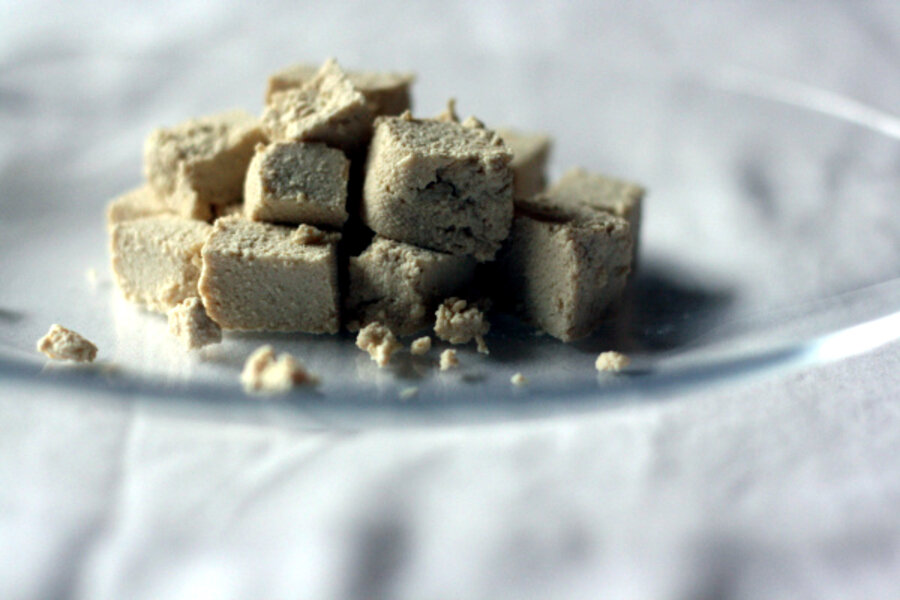Meatless Monday: How to make homemade tofu
Loading...
I’ve tried making tofu several times now and the process never goes exactly the same.
I’m always surprised – the resulting tofu may turn out a little firmer or a wee bit spongier. I really can’t tell you why but that’s OK since it always tastes good. I just mix it up, using the tofu in different recipes. Keep in mind, the quality of your soymilk plays a huge part in how your tofu will turn out. In other words, keep experimenting until you’re satisfied!
As for equipment, I took out my stainless steel pot, a couple of wooden spoons, my recently-purchased cheesecloth (you can use a thin cotton non-terry dish towel or handkerchief), and I was ready to start tofu-making.
True to “no fancy equipment” form, I decided to convert an old plastic tofu container into a makeshift tofu press. I turned it upside down and started cutting into the nicks that were already molded into the plastic, making sure the slits were big enough to allow liquid to drain through. Clever, eh? You could also use a colander to press your tofu.
Homemade Momen Tofu
Time: 45 minutes to 1 hour
Makes: about 14 ounces of tofu
2 teaspoons Epsom salt
4 cups soymilk (storebought or homemade)
Stir the Epsom salt into 1/2 cup hot water until it completely dissolves.
In a large pot, bring the soymilk to a gentle boil over medium-high heat. When steam starts to appear and bubbles form around the edge of the pot, reduce the heat to medium. Simmer for about 3 minutes, stirring often to ensure the soymilk doesn’t burn. Remove any film that forms on the surface.
Reduce the heat to low. Pour the Epsom salt mixture into the hot soymilk a little at a time, stirring after each pour. The curds will soon start separating from the whey. As soon as obvious curds have formed and the whey turns from a milky white to a yellowish, translucent liquid, stop pouring. You want to use as little coagulant as possible because it might impart a bitter taste to the tofu. I usually use up about 1/4 to 1/3 cup of the Epsom salts mixture.
Take the pot off the heat and cover with a lid. Let it sit for about 15 minutes to allow the curds to separate even further. After 15 minutes, if the whey is still opaque, add more of the Epsom salts mixture, stirring after each pour. Don’t worry if the curds are no bigger than coarse breadcrumbs.
Set your “tofu press” over a colander in the sink. Line the press with the cheesecloth.
Pour the curds and whey into the “tofu press” in stages, waiting for the whey to drain into the sink. Wring as much liquid from the cheesecloth as possible.
Press the curds into the “tofu press,” filling out the corners. Or press into the bottom of a colander or sieve. Fold the cheesecloth neatly and place a folded towel on top to soak up excess liquid. Weigh down the tofu with two cans of food.
Allow the tofu to set for 15 to 20 minutes. Unwrap the cheesecloth and turn the tofu block out into a large bowl or plastic container. Fill with water, being careful not to hit the tofu directly with the stream of water, and rinse the tofu gently. Drain and the tofu is ready to be made into dinner.
To store, submerge the tofu in water in the refrigerator for 2 to 3 days, changing the water every day. Remember, this is fresh tofu and has no preservatives!








